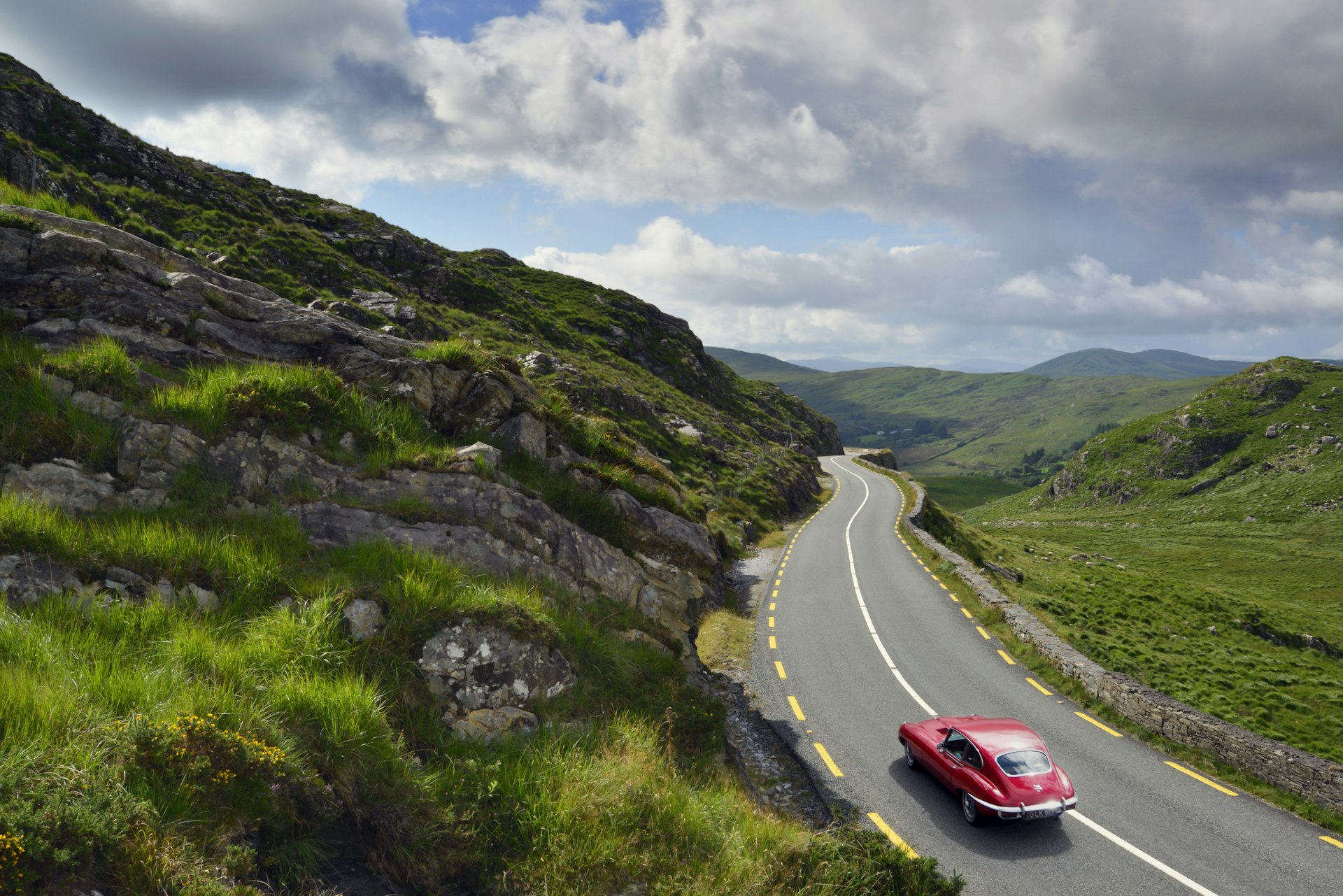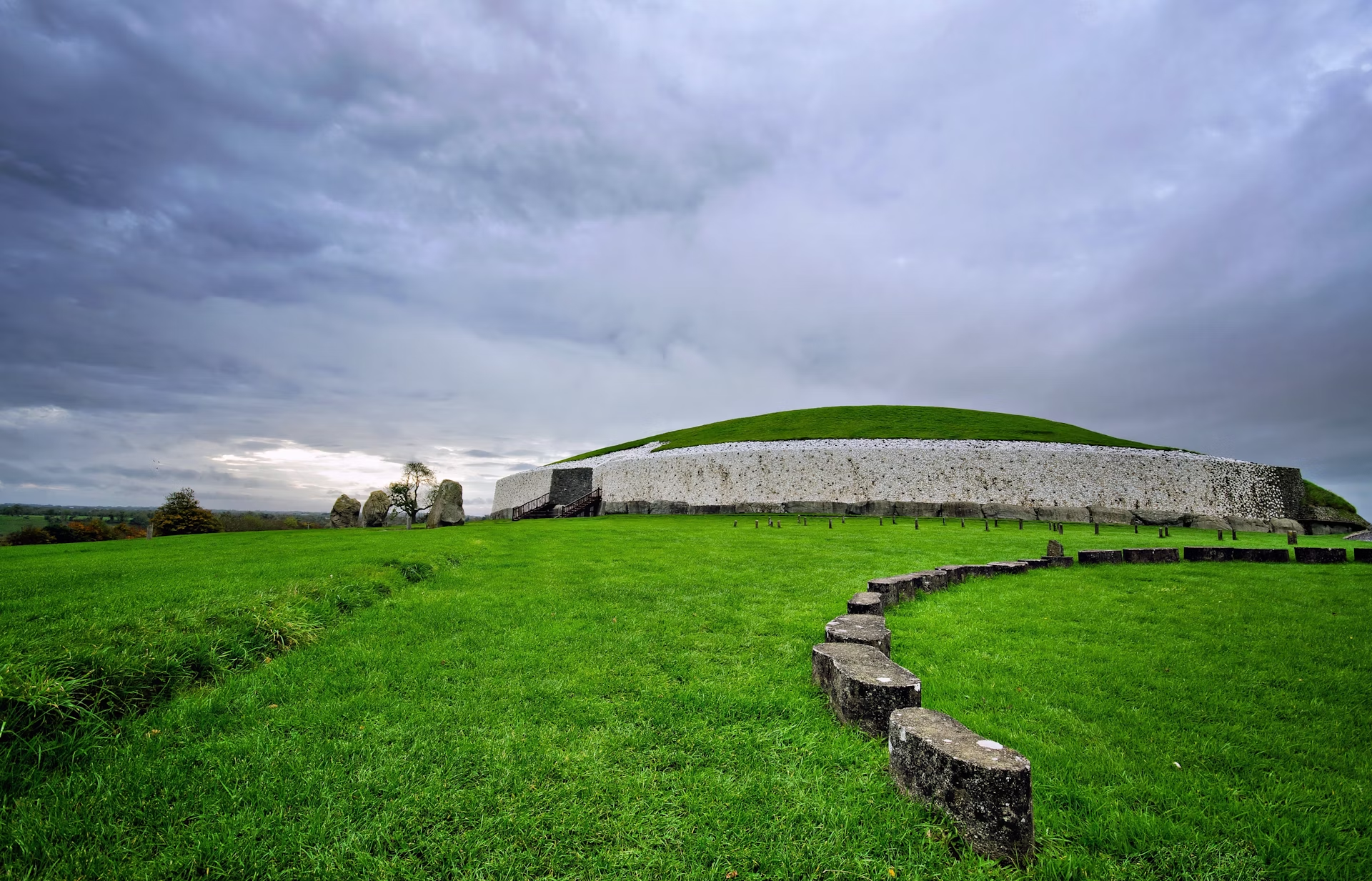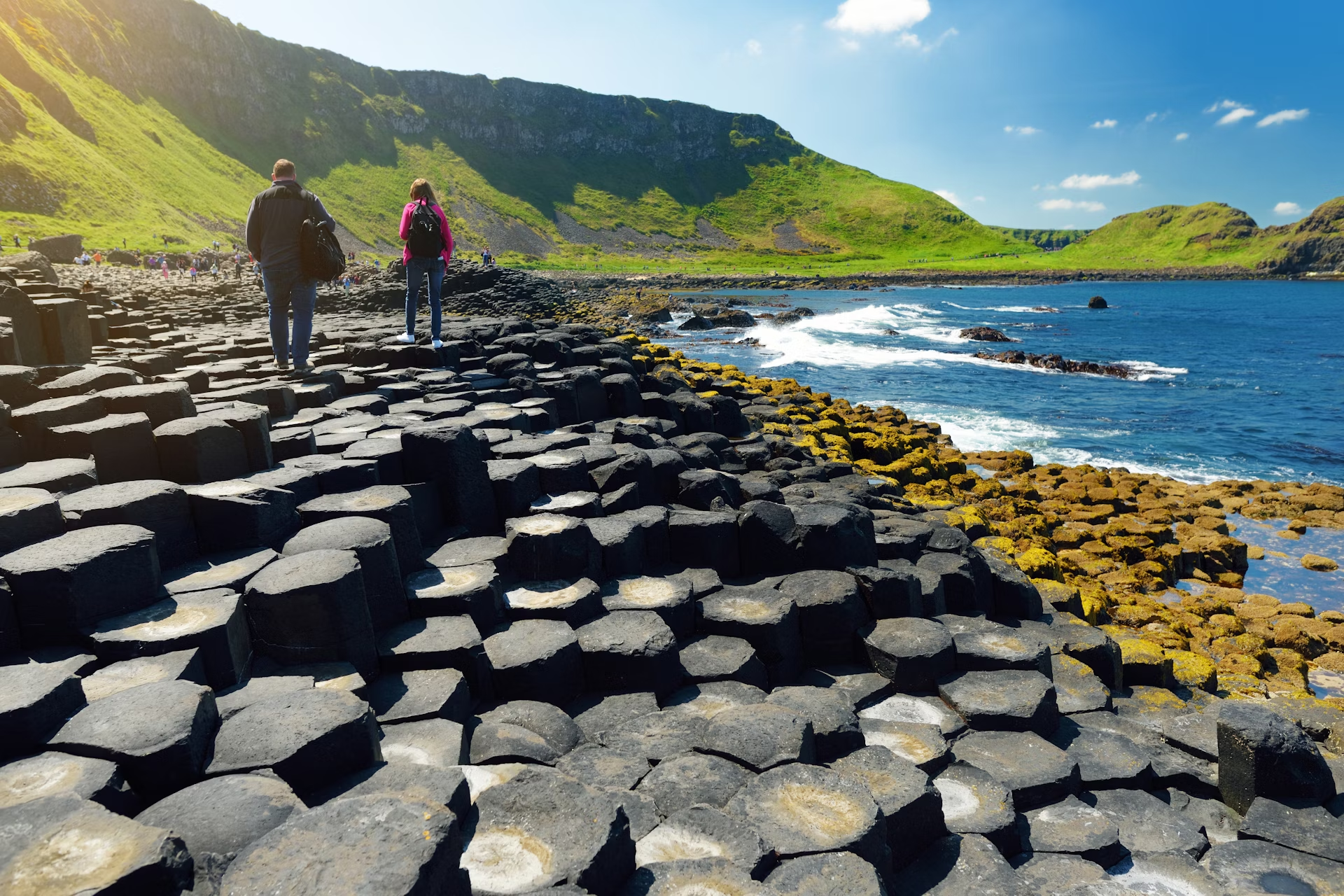For many visitors, Ireland lives large in the imagination.
There’s a huge weight of expectation for first-time visitors, who are looking for postcard Ireland: the dramatic landscapes, the traffic jams made up of sheep, the friendly pubs resounding with traditional melodies. Locals might scoff, roll their eyes and point to a modern European country with all the trappings of contemporary life, but the truth is that you will find all of those things in Ireland.
Sure, it has top-class attractions, five-star hotels and a sophisticated dining scene, but what makes Ireland a truly special place to visit are those intangible moments that will stay with you long after you’ve gone home. A sunset over ancient ruins after a day of rain. An evening in the company of locals in a small rural pub. A flock of sheep blocking a desolate country road.
Whatever version of Ireland you’re coming to find, give it enough time. Here’s some ideas to get you started.
1. Make the most of Dublin’s charm
Ireland’s capital and largest city by some stretch is the main gateway into the country, and it has enough distractions to keep visitors engaged for at least a few days. From world-class museums and entertainment, to superb dining and top-grade hotels, Dublin has all the baubles of a major international metropolis – most within easy walking distance of each other. But the real clincher is Dubliners themselves, a garrulous, amiable and witty bunch who prize being good hosts above most other things and will make you feel welcome with their compelling soul and sociability. And did we mention it’s the home of Guinness?
Local tip: Some pubs – especially those frequented by unsuspecting tourists – raise the price of a pint after 11pm or midnight. Keep an eye on what you’re forking out and perhaps take your business elsewhere.
2. Dive into Dingle Town
Dingle is the quintessential Irish town in all its colourful beauty. The unofficial capital of the picturesque, ruin-strewn peninsula jutting into the Atlantic from County Kerry, Dingle is what visitors assume a quaint Irish town should look like. The brightly painted shopfronts, the pubs that double as grocery stores, the busy port full of boats unloading the freshest of seafood – Dingle just oozes charm. As well as oodles of summer visitors, Dingle is a place that many escape to, so while it might be the epitome of Irish, there’s a strong cosmopolitan and creative bent to the place, too.
3. Discover Connemara’s rugged beauty
A filigreed coast of tiny coves and beaches is the Connemara Peninsula‘s beautiful border with the wild waters of the Atlantic. Away from the coast, the starkly beautiful interior is a kaleidoscope of rusty bogs, lonely valleys and shimmering black lakes. At its heart are the Maumturk Mountains and the pewter-tinged quartzite peaks of the Twelve Bens mountain range, with a network of scenic hiking and biking trails. Everywhere the land is laced by stone walls.
Detour: The 40km Ballyconneely and Roundstone Loop takes you through the natural wilderness of Derrygimlagh and Roundstone bogs, past the site of the crash-landing of the first transatlantic flight by Alcock and Brown in 1919 and the old Marconi transatlantic wireless station. Also on the loop are the stunning twin beaches of Gurteen and Dog’s Bay with their pristine white sands and azure waters.
4. Traipse the Causeway Coast
County Antrim’s Causeway Coast is one of Ireland’s scenic highlights, a 53km-stretch between Portstewart and Ballycastle that is home to Ireland’s oldest distillery, a vertigo-inducing rope bridge and the biggest draw of them all, the UNESCO World Heritage Giant’s Causeway. One look at the outsized basalt columns and you’ll understand why the ancients believed they were put there by a mythic giant. Beyond the causeway, the coastline has castle ruins, some world-class golf courses and a superb dining scene that showcases the very best of local produce.
5. Darken the doors of the pub
Even now, in the third decade of the 21st century, the pub remains the alpha and omega of much of Irish social life. In small villages it’s the heart of the community; in bigger towns and cities it’s the place where the Irish gather to celebrate, criticise and commemorate. There are bars of every stripe and hue, but none will match a classic traditional pub – the flagstone floors, the roaring fires, the live music in the corner – for atmosphere. Luckily, you’ll find one in virtually every hamlet you visit, such as Morrissey’s of Abbeyleix, which has been doing its thing since 1775.
Local tip: If you’re lucky enough to fall in with a group of locals, be aware of the rounds system, where everyone in the group stands a round in turn for everyone else. Sure, you might be committing to drinking more than you may have initially planned, but nothing will endear you to the locals more than this time-honoured tradition. And you can always opt for something non-alcoholic halfway through!

6. Wander along the Wild Atlantic Way
In 2024, the Wild Atlantic Way celebrates its 10th birthday, a full decade of wiggly-line signposts along the 2,500km of coastline between Kenmare in County Cork and the craggy, crenelated coastline of Donegal. Now firmly established as one of the world’s great driving routes, the Wild Atlantic Way is packed with everything you came to Ireland to experience: historic sites and quaint villages; towering cliffs and panoramic ocean views; music pubs and a rich food culture – all framed by the spectacularly rugged scenery for which the west coast is famous.
Detour: The Wild Atlantic Way is made up of 2,500 non-sequential kilometres, with infinite opportunities to get off the main road and down some rural track, where the true wild essence of the route is found.
7. Drive the Ring of Kerry
Driving around the Ring of Kerry is an unforgettable experience in itself, but you don’t need to limit yourself to the main route. Along this 179km loop around the Iveragh Peninsula, there are countless opportunities for detours. From near Killorglin it’s a short hop up to the beautiful, little-known Cromane Peninsula. Between Portmagee and Waterville, you can explore the Skellig Ring, while the peninsula’s interior offers mesmerising mountain views. And that’s just for starters.
Local tip: The Ring of Kerry is Ireland’s most popular driving route, and it gets pretty full in summer. To make the best of the inevitable traffic, you can do the route counter-clockwise from Killarney up to Killorglin, returning via Kenmare and Ladies View – it’ll make for a better experience and you’ll avoid meeting tour buses coming the other way.

8. Toe tap to a traditional “session”
Western Europe’s most vibrant folk music is Irish traditional music, which these days expresses itself in a myriad ways, from the plaintive beauty of a sean nós (or “old style”) singer in County Clare to the folk punk energy of contemporary groups like Lankum. To hear it live, make a beeline for a seisún – literally, “session” or performance – in a traditional pub, or you can go one better and find a “music house” in places like Doolin, in County Clare, the unofficial capital of Irish music.
Local tip: You’ll find superb trad in most of County Clare’s villages, but you won’t find any better than Miltown Malbay. There are three great music pubs in the village; an absolute favourite is Hillery’s, which has live sessions every weekend year round and every night in summer.
9. Experience the passion of Gaelic Games
It depends on whether you’re in a football or hurling stronghold (some, such as County Cork or Galway, are both), but attending a match of the county’s chosen sport is not just a unique Irish experience but also a key to unlocking local passions and understanding one of the cultural pillars of Ireland. Whether you attend a club football match in a rural parish in County Kerry, an intercounty hurling battle between old foes such as Kilkenny and Tipperary, or an All-Ireland final at the cathedral of Gaelic games, Croke Park in Dublin, you cannot help but be swept up in the emotion of it all.
Planning tip: While watching is great fun, you can try your hand at both Gaelic football and hurling at Experience Gaelic Games, where you’ll get to meet members of a local Gaelic club who’ll explain technique and the basics before letting you have a go.

10. Get lost along the Clare Coast
The County Clare coast is a stunning canvas where nature’s grandeur is vividly on display. The Cliffs of Moher ascend dramatically from the Atlantic, an awe-inspiring spectacle as the setting sun casts a golden hue over their rugged facade. This natural marvel, alongside the charismatic puffins, exemplifies the region’s raw beauty – and is one of Ireland’s top natural attractions. Further south, the towering sea stacks and mysterious ruins of stone cottages of the Loop Head Peninsula are a quieter but equally beautiful alternative. The coastal villages, like Ennistymon, come alive with traditional music, while Lahinch beckons surfers to its wild, welcoming waves.
11. Walk the walls of Derry/Londonderry
History runs deep in Northern Ireland’s second city. Its very name is a continuing source of conflict: nationalists call it Derry, while many unionists insist on Londonderry, even if locals of both persuasions call it by the shorter name. Derry’s tumultuous history is just part of what makes it a fascinating city, for this is also the artistic and cultural hub of Ireland’s northwest, drawing creatives from the province and beyond. A visit here will give you a first-hand lesson in Irish history, but its pubs and restaurants will guarantee a bit of fun while you learn.
12. Spend some time in Cork City
Ask any local and they’ll tell you Cork is Ireland’s second city in size only; in every other respect it’s not just the best place in Ireland, but maybe the world. Such is the outsized sense of pride Corkonians have in their own hometown that they’re only half-joking when they refer to it as “the real capital of Ireland”. The compact city centre is set on an island surrounded by water: within its confines you’ll uncover a charming city with a broadly progressive outlook on life, a highly developed food scene and an artisan coffee shop on every corner. In between them are handsome Georgian avenues and pokey 17th-century alleys packed with pubs, music venues and gorgeous little shops.
Planning tip: Parking in Cork is a nightmare, so if you’re driving use the Black Ash Park & Ride on the South City Link Rd, on the way to the airport. Parking is €5 a day, and shuttle buses ferry you into the centre every 15 minutes.

13. Go deep at Brú na Bóinne
Looking at once ancient and yet eerily futuristic, Newgrange’s immense, round, white stone walls topped by a grass dome is one of the most extraordinary sights you’ll ever see. Part of the vast Neolithic necropolis of Brú na Bóinne (the Boyne Palace), it contains Ireland’s finest Stone Age passage tomb, predating Egypt’s pyramids by some six centuries. Most extraordinary of all is the tomb’s precise alignment with the sun at the time of the winter solstice, which sees a shaft of sunlight illuminate the passageway… so long as it’s not cloudy!
Detour: Sure, Brú na Bóinne gets all the plaudits, but the passage tombs at Loughcrew are more atmospheric – if only because they don’t get a fraction of the visitors. They’re just outside Oldcastle, off the R154: once you park you’ll have to walk up a hill to get to them but it’s all just part of the atmosphere.
14. Tee it up with on a golf links
If Scotland is the home of golf, then Ireland is where it goes on holiday. There are over 350 courses throughout the country, including some extraordinary inland ones, but the most memorable ones are strung out along the coastlines. Ireland’s collection of links courses include a handful that rank as the very best in the world, but you don’t have to play Ballybunion in Kerry or Royal County Down to get a true flavour of what makes Irish golf so good. There are dozens of other lesser known gems, each offering golfers the opportunity to test their skills against the raw materials provided by Mother Nature.
15. Get prehistoric at Carrowmore Megalithic Cemetery
One of Europe’s most significant megalithic monuments, the collection of stone circles, passage tombs and dolmens at Carrowmore is rich in superlatives: the oldest Stone Age monument in Ireland, and one of the largest cemeteries of its kind in Europe. What makes a visit here truly fascinating, however, is the ongoing process of discovery, as archaeologists continue to excavate new monuments and, most excitingly, piece together clues as to the site’s deeper meaning and connection to the world around it, including its mathematical relationship with the rising and setting of the sun at Halloween.
